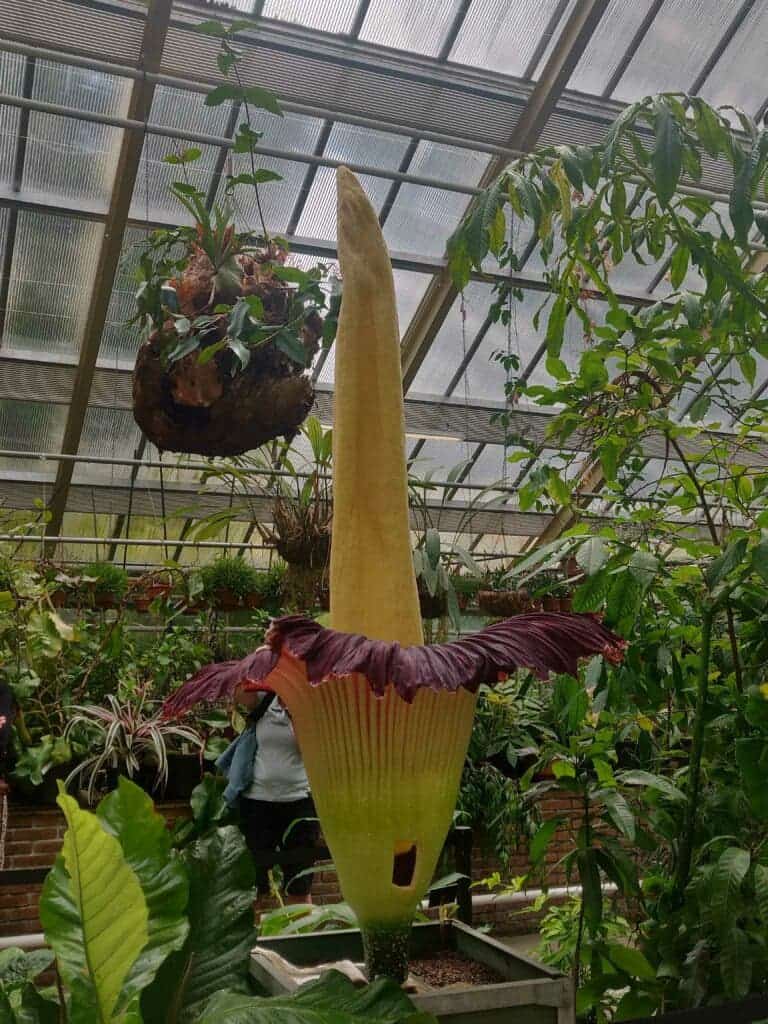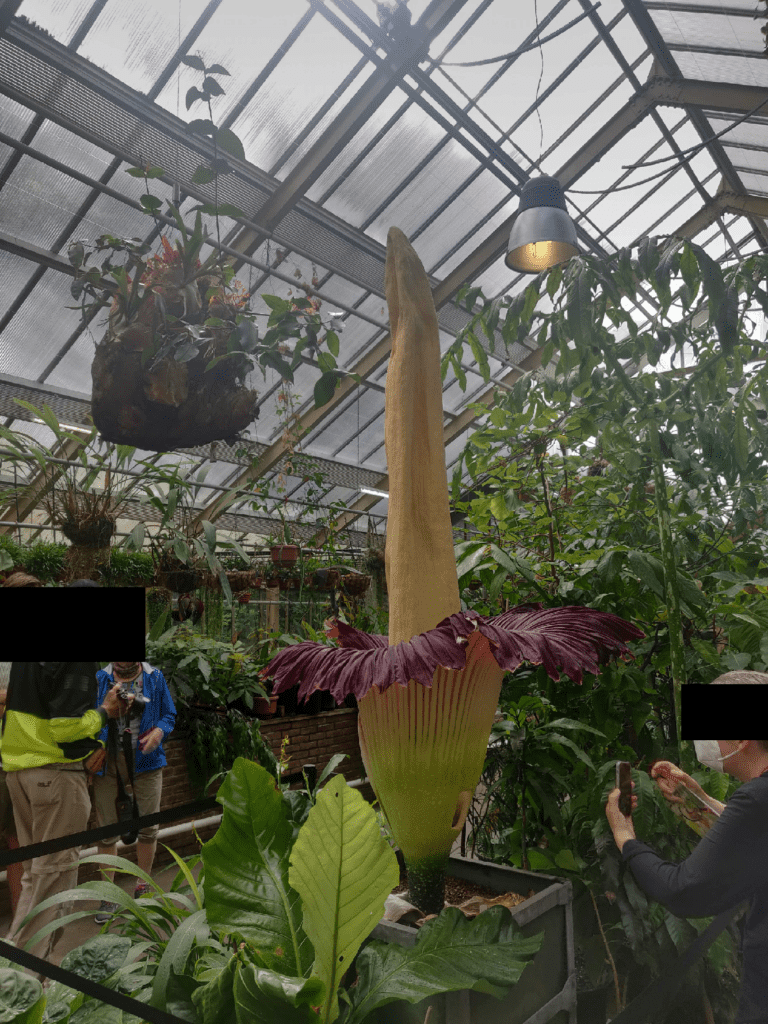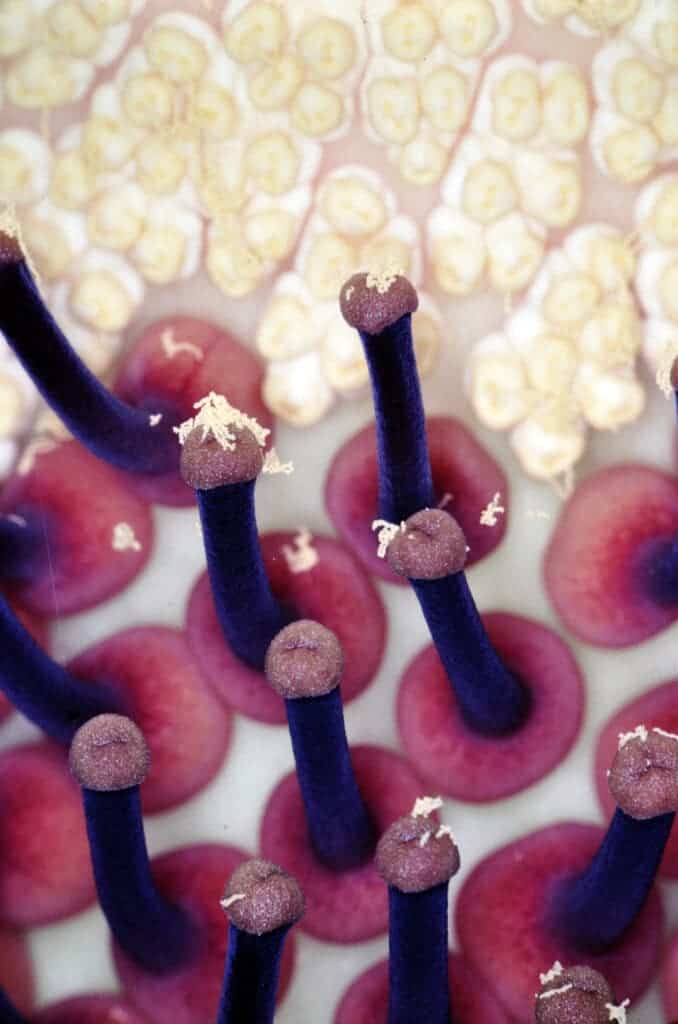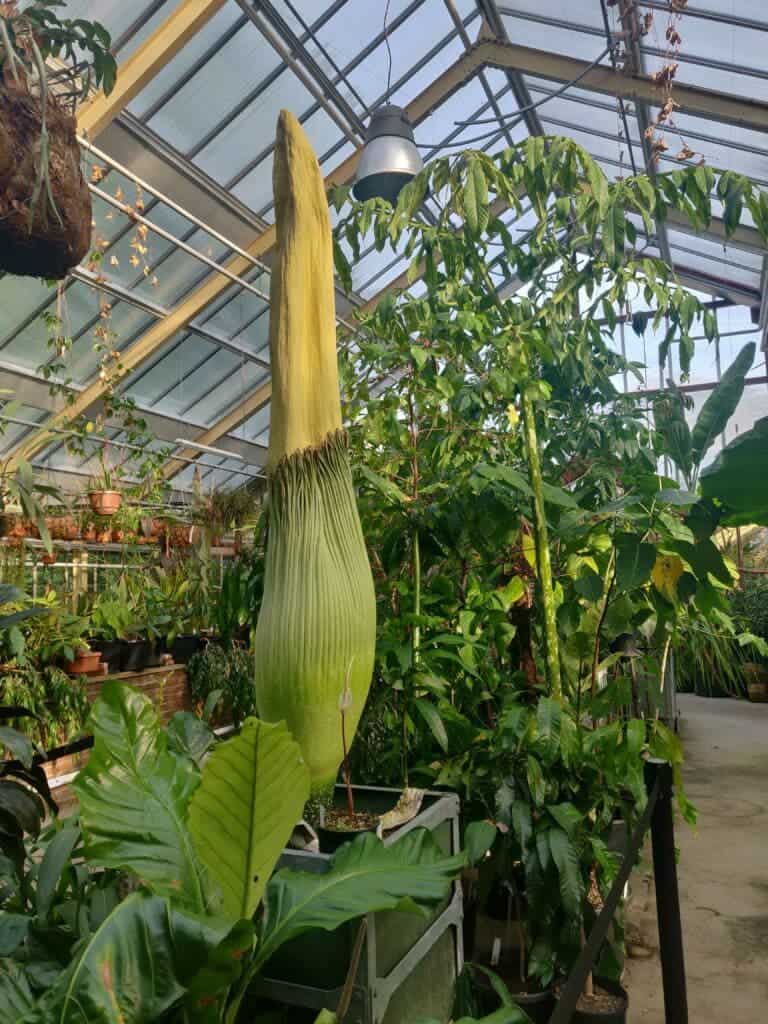At the Hortus botanical garden in Leiden, Netherlands, a large, penis-shaped, corpse-smelling flower is blooming. It’s one of the rarest blooms you can witness.

Amorphophallus titanum, or as it’s called, the Titan Arum Flower or the Giant Penis Flower, is one of the largest flowers on Earth. It can take up to a decade to bloom (sometimes, even more) and it has to be grown under special conditions — there aren’t that many of them growing around the planet. So when one blooms, it’s understandably a big deal.
The Hortus botanicus of Leiden, Netherlands, is one of the oldest botanical gardens in the world, founded in 1590. They announced that the flower was about to bloom a few days ago, which naturally got people across the country, not just in Leiden, very excited. It’s always hard to predict exactly when one will bloom, and since it lasts around 24-36 hours, they wanted everyone to be ready. Not long after that, on July 14, the bloom started, the first time the plant has flowered since 2009.

We went there to witness and photograph it and it wasn’t just a feast for the eyes, it was also a feast for other senses… sort of. The titan arum flower is also called the ‘corpse flower’ for the pungent odor it produces during its flowering period (though it’s not the only flower to be called a corpse flower). It actually produces two blooms: the first part with female flowers and the second with male flowers. Both flowers grow within the same inflorescence, but the female flower blooms first to prevent self-pollination and the male flowers follow a bit later, typically a day after the female bloom.
“They have both male and female flowers but they flower at two slightly different periods. first, the female flower, and the day after, the male flowers flower,” says Jeff Korsmit, a horticulturalist at the botanical garden. “These are the female flowers, they started flowering yesterday evening, they’re almost done now so there’s not much smell left. Then above them there are the male flowers, they will start flowering this evening.”
“If they would flower at the same time, its own pollen would pollinate itself which would lead to inbreeding. They want genetic diversity,” Korsmit told me from right next to the flower.


There’s a good reason why it’s so stinky: it attracts carrion flies and beetles that pollinate it (although researchers aren’t exactly certain how this pollination works). During the bloom, the tip heats up and reaches roughly human body temperature, which volatilizes the stench and carries it further. After the bloom will end, if the flowers are pollinated, they will turn into berries.
“Its pollinators are flies and some species of beetles, everything that likes the stench. Things that like rotting meat also like its scent. Also the spadix, the large yellow part, can produce heat. It can get ten degrees hotter than the surrounding temperature, so it produces smell and warmth, that’s how it tries to mimic carcasses,” Korsmit adds.

The name of the plant is linked to its penis shape, and it’s not exactly hard to guess why. Even the scientific name (Amorphophallus titanium) references this phallic shape, literally meaning ‘giant shapeless penis’. The plant grows in the rocky lowland forests of Sumatra, and it is endangered due to deforestation which is wiping out its habitat. Unfortunately for the titan penis plant, the same habitat it prefers is also preferred by palm oil planters. Because it blooms so rarely, the decline in its numbers spells double trouble: it needs other plants to bloom at the same time if it is to get pollenized. If there are fewer plants, there’s a lower chance of it synchronizing its bloom with another nearby plant, Korsmit says.
“Back in the day, when the whole of Sumatra was a rainforest, it was a good chance that somewhere closeby there was one of the same plant flowering on the opposite. But now Indonesia is really bad with deforestation because of palm oil, so it’s really hard to get plants flowering on the same day, the opposite way. In the wild, it’s not doing so well but fortunately, we’re hosting it in botanical gardens. But it’s bad, there’s not much of it left in the wild. If we want to keep this species alive, protecting the rainforest is a good start.”
The leaf structure can reach up to 6 meters (20 ft) tall and 5 meters (16 ft) across and the inflorescence itself can reach over 3 meters (10 ft) in height, although the one in Leiden was a bit smaller. The corm of this species is the largest of any known plant, reaching well over 50 kg (110 lb). The record is held by a corm grown at the Royal Botanic Garden Edinburgh, in Scotland, at 153.9 kg (339 lb) after 7 years of growth from an initial corm the size of an orange.

This unusual plant also has an unusual growth cycle. After flowering, a single, large leaf emerges from the underground tuber. After about one year and a half of gathering energy, the leaf withers, and the tuber rests for a few months. At some point, it produces another leaf, always about twice as big as the previous one. The new leaf gathers more energy, and then also withers, and the tuber rests again. After a number of these cycles, the tuber builts enough energy to start flowering again. It’s hard to know exactly when the flowering process will start, but in recent years, botanists are becoming a bit better at growing the plant, as our understanding of it also improves.
“In March, the tuber of this plant was weighed and repotted. At that time we already suspected that it would flower this year,” the Leiden botanical garden mentioned in a statement. The first time the species bloomed at this botanical garden was in 1956, but it’s been more than a decade since its last bloom.

Every year, there are a few recorded penis flower blooms, and sometimes, the flowers are also given fun names. For instance, in 2008, the National Botanic Garden of Belgium recorded the flowering of Jean-Pol, de knol and Hercule, le tubercule; The Amazing Stinko bloomed in Lauritzen Gardens, Omaha, Nebraska in 2017; and in 2018, Uncle Fester bloomed in Bloedel Conservatory, Vancouver, British Columbia, Canada.
Chemical analyses of the flower have shown that the stench includes molecules of trimethylamine (also found in rotting fish), isovaleric acid (found in sweaty socks), dimethyl disulfide (garlic), and benzyl alcohol (sweet floral scent). It’s quite the mixture.


